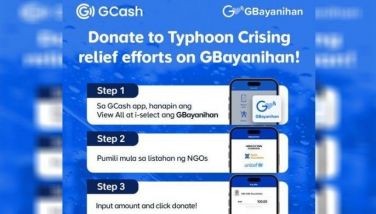Biliran prepares for disaster response
CEBU, Philippines - Realizing the difficulties in handling massive response to calamities similar to super typhoon Yolanda’s, the Biliran provincial government — in collaboration with the United Nations Development Programme, the Philippine Disaster Risk Reduction Network, Office of the Civil Defense and local government units — conducted a series of seminar-workshops to prepare the people for the worst-case scenario.
The island-province of Biliran, located in the northern tip of Leyte, lies along typhoon paths, with the Philippine Fault traversing beneath and active volcanoes compounding the grave concerns.
Elected government officials, from the province down to the barangays, those from national government agencies and academe joined in contingency planning workshops.
The second batch in the contingency planning workshops, held from September 9 to 11, consisted of officials from Caibiran and Maripipi towns of Biliran that shared the hazards of volcanoes. Caibiran considered flooding as its worst-case scenario, while Maripipi prepared for storm surge and tropical cyclone.
Dario Cubelo, UNDP area coordinator, emphasized the importance of actual and accurate data in coming up with a realistic contingency plan. “Coordination among all sectors is critical; therefore having a data base down to barangay level can greatly help during the response phase.”
Contingency planning is to unite members of the council with a common understanding of the situation, formulate appropriate policies and concrete action during emergencies, draw commitments and coordinated efforts among member agencies and other stakeholders to identify critical next steps in implementing the plan.
Julio Cairo, head of Maripipi’s Disaster Risk Reduction and Management Office, told The FREEMAN that the town has the needed data but lacked the capacity on how to integrate these in the planning process. “This contingency planning workshop can guide us during emergency situations,” he said.
Caibiran, on the other hand, realized the importance of gathering accurate data especially that they already have an incident in the past when a whole community was relocated due to massive flooding.
Bong Masagca, PDRRN executive director, expounded the importance of information in the planning process. “From the municipal profile, disaster profile, hazard map and risk assessment results, capacity needs assessment to the overall plan and programs on DRR and CCA, using accurate information is always the key to an effective and efficient response,” he said.
Jun Dacillo, of the Provincial Disaster Risk Reduction and Management Office, narrated how false information on a supposed plane crash hurt a responder and created confusion among them due to the lack of a contingency plan. “A unified approach in any given incident can ease the burden of victims and guarantee the safety of rescuers,” he said.
Maripipi and Caibiran LGUs went through the eight steps in the planning process: environmental scanning, scenario building, formulation of policies, inventory of resources, sectoral/cluster arrangement and planning, standard operating procedures, review of MDRRMC structure, and identification of next steps.
Both LGUs committed to have a functional contingency plans after the three-day seminar-workshop. (FREEMAN)
- Latest


























